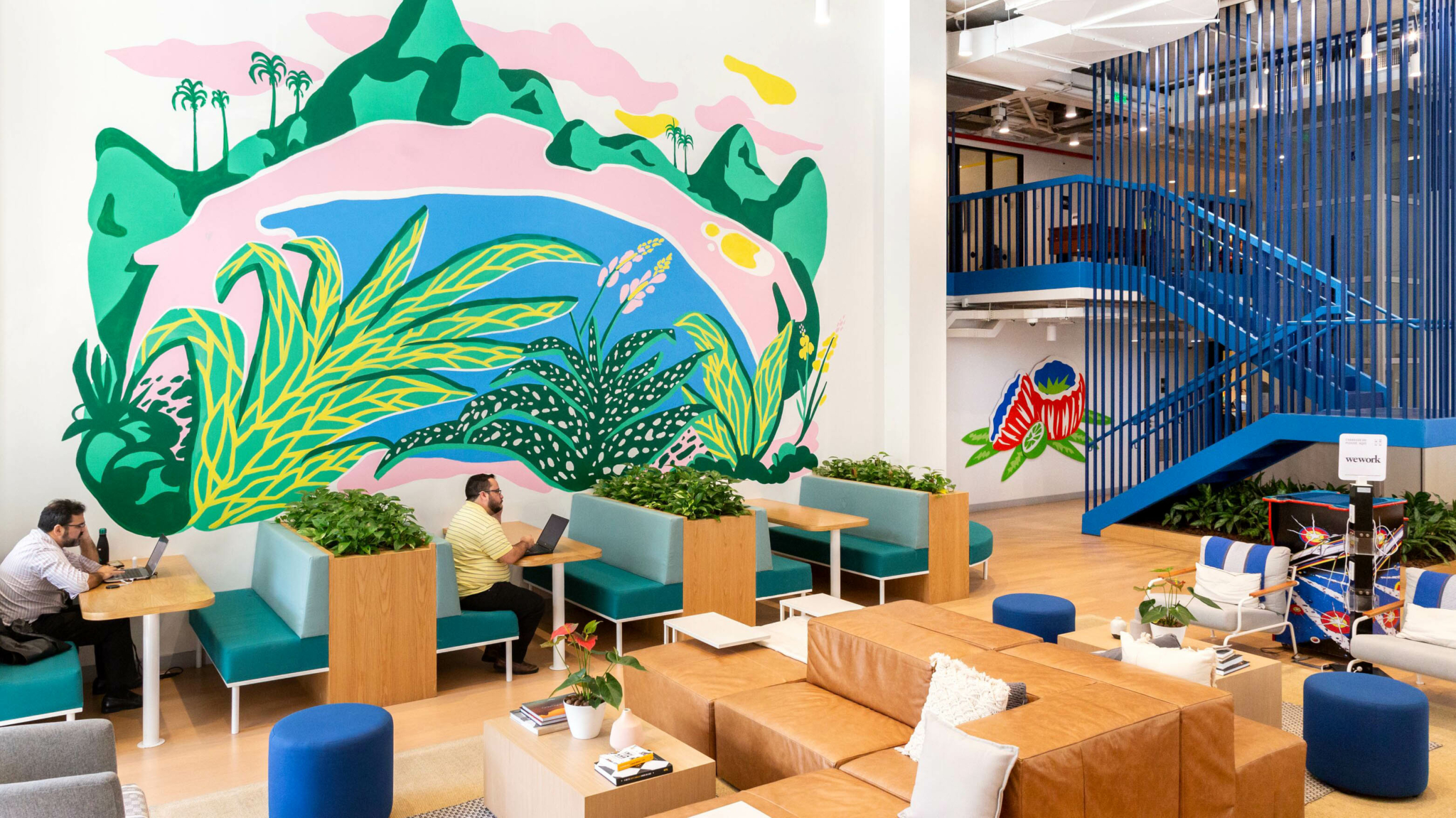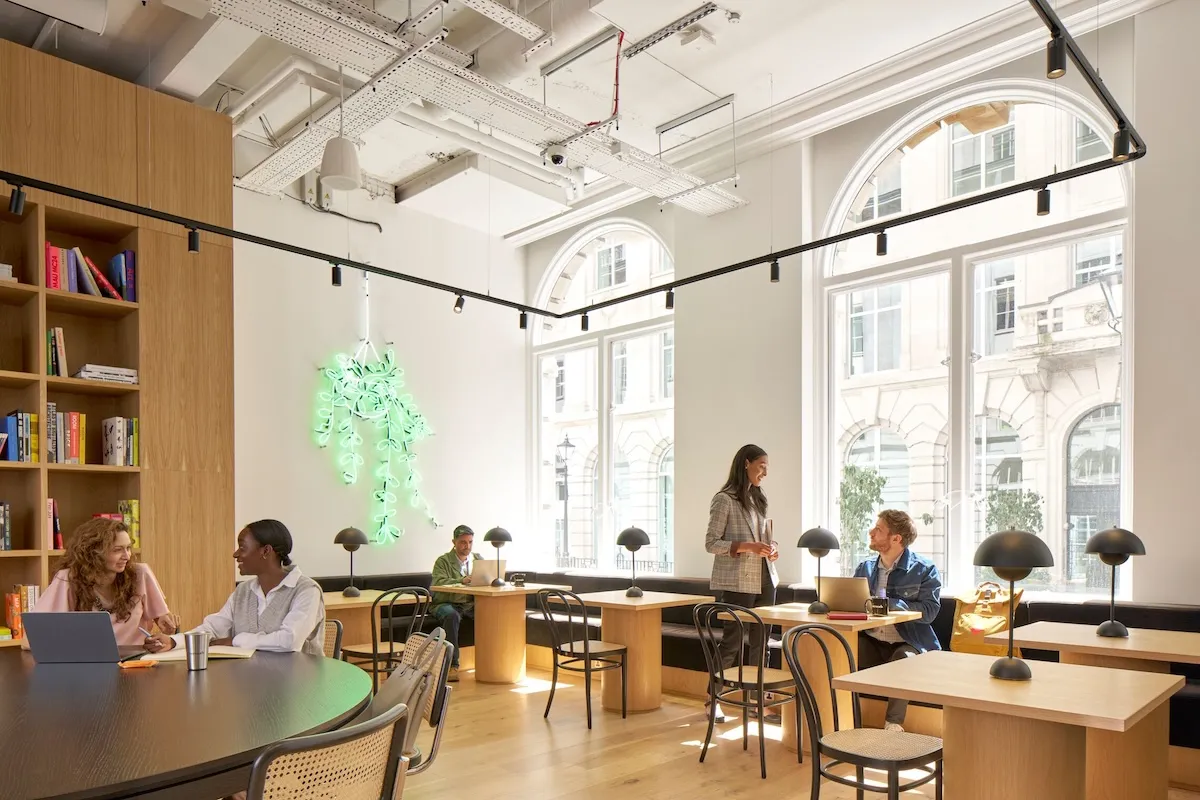Company culture describes an organization’s core set of values, ethics, and beliefs. It can be expressed in different ways, from how business practices are decided upon and implemented, right down to how individual workers interact with one another around the office.
Leadership styles and the physical work environment can all reflect a company’s culture. It can inform an organization’s guiding mission and goals, shape management structure, and set baseline expectations for employee attitudes and behavior.
Yet defining company culture is tricky. Depending on who you ask, it can simply mean the perks and bonuses offered to employees. It might be as frivolous as the inspirational slogan displayed in neon text in the lobby, or it could be as profound as the driving principle behind everything a company does.
What’s way more certain is that today, every company has a personality and a reputation that’s evident to its customers, employees, and potential new hires alike. Establishing your company’s culture and demonstrating it clearly and often is a vitally important part of selling your product, attracting qualified workers, keeping them happy, and retaining top talent.

More than ever, company culture is a determining factor for the next generation of workers as they look to enter the workplace. These employees are arriving at a time of massive change for the traditional office environment, and they value a sense of belonging through the beliefs and goals they share with colleagues.
Why is company culture important? Benefits and advantages
Having a strong and clearly defined company culture offers substantial benefits for employers and employees alike, including:
- Happy employees. People who feel closely aligned with their company’s culture are more likely to feel comfortable and happier in the workplace.
- A sense of belonging. A company’s culture doesn’t dictate the hiring process, but it will naturally attract more employees who share a set of similar beliefs, creating a sense of belonging among the workforce.
- Consistent customer trust. When a company’s stated philosophy is backed up by positive actions and good business practices, customers feel they can trust that company.
- Good relationships between employees and managers. A coherent company culture means managers and workers are pulling in the same direction, reducing conflict and boosting collaboration.
- Productivity. When an employee shares the same goals and values as the company they work for, they’re more productive and passionate about the work they do.
- Employee retention. Employees who feel a strong sense of belonging at a company stick around longer, reducing the cost of hiring and training new workers.
- Greater possibility of attracting qualified employees. The more specific your company’s core values, the greater chance you have of finding qualified employees that share those same values.
Common words used to describe a company culture
The following words are often used to positively describe a company culture:
- Friendly: Shows that employees engage with one another in a positive way throughout the workday.
- Challenging: Indicates that employees are encouraged to explore the full potential of their skill sets, and that they’re likely to grow through the job experience.
- Motivating: Implies that the company is inspiring, and employees will feel compelled to work hard.
- Engaging: Suggests that employees will feel invested in their work because it speaks to their interests.
- Nurturing: Conveys that the company is invested in employees’ growth and development.
- Collaborative: Signifies that employees and teams will work well together cross-functionally to accomplish their goals.
- Autonomous: Expresses that employees are trusted to have ownership over their work and that they have individual power to improve results.

These are just a few examples of words that companies use to describe their culture. While you may gravitate toward a few, be sure to come up with some other, less common terms that are specific to your company. This will help your company stand out from the rest. But before you get to picking adjectives, you’ll need to gain a better understanding of the elements that contribute to a company’s overall culture.
How to describe your company culture
A company’s culture has several key elements. Consider the following when describing yours.
Mission
What does your company ultimately aim to accomplish? Do you want to bring innovation to the world, provide the best customer experience possible, or craft quality products that people can’t stop talking about? Your mission statement may be as short as a single sentence or as long as a paragraph or two, but it should be as succinct as possible.
Values and ethics
What do you believe in? The values and ethics that are dominant in your business will affect many aspects of everyday life in your workplace. Here are examples of the values that companies often prioritize:
- Respect and fairness
- Trust and integrity
- Growth mindset
- Teamwork
- Employee engagement and opportunities for advancement
- Communication and transparency
- Diversity
- Results
- Work-life balance
- Impact on the world
Ethics might come into play when you’re deciding which values are the most important to your company. For example, every business wants to see tangible results in the monthly balance sheets. You need to consider how far you’re willing to go to see those results, however. If you cut corners with your products or services to save money, or you resort to underhanded techniques to beat out a competitor, your company’s integrity is likely to suffer.
Every policy you write for your company should relate back to the values you’ve set. Think of values and ethics as your destination, and your policies as different routes that will get you where you want to go.
Work environment
Google is famous for its main office complex, which is basically a playground for adults. With nap pods, massage rooms, and free gourmet meals, it’s a place where most people dream of working. While you may have neither the desire nor the funds to imitate Google’s work environment, you should give serious thought to how people feel when they are in your office.
Décor can play a big role. A lack of decoration can seem stark and prison-like. White walls, cookie-cutter furniture, and fluorescent tube lighting can make employees feel as if they’re trapped. Consider adding elements to your office that promote a happy, energetic environment.

Color psychology indicates that colors really can have an impact on mood, so research what different hues mean and incorporate them into the office. You can also pick out some artwork that will lighten the mood.
The overall configuration of your office should also be taken into account. For example, if teamwork is one of your most treasured values, you’re hurting yourself if your office is nothing but a series of cubicles that cut team members off from one another. You should consider switching to a space that easily enables collaboration. WeWork On Demand and WeWork All Access allow teams to work together in common areas and conference rooms designed for productivity, whenever they want. Also consider your company’s employee website, if it has one. It’s like a cyber-extension of your work environment. Does it do a good job of reflecting your new cultural values?
Interactions between team members
Company culture might be at its most obvious when you’re observing how your team members interact with one another. Is there a continual, open flow of ideas, or do your employees tend to ignore one another or engage in mean-spirited competition?
If you don’t like what you see, you may have to adjust your company’s culture guidelines to foster a better environment. Don’t just say what needs to be done—lead by example, and make opportunities for people to become more comfortable with one another. By embodying your ideal company culture and hosting social events for your team, you can create an atmosphere of innovation, communication, and trust.
Building company culture
Once you’ve defined where your company culture is and where you want it to be, you can start crafting concrete policies and practices that are in line with your target culture.
Evangelize and measure your company culture
Think about how to describe company culture to your existing team members. Write down what you want the culture to be, and prepare a presentation that will help you get your message across. Meeting with your team is your opportunity to:
- Get their perspective on the current company culture. They may be aware of issues that you haven’t even thought to address.
- Gauge their reactions to the new culture that you’re trying to cultivate.
- Gather their ideas on how to improve company culture.
You can also set concrete goals as they relate to your culture. Some things, like trust and openness, are practically impossible to measure. However, you can send out quarterly surveys to your employees to see how they think the culture is progressing.
Other goals are easier to measure. You might decide to remodel the office by the end of the year, start hosting a monthly social gathering for the team, or begin using new collaborative software to encourage team thinking.
Find the right people
More and more, businesses are putting increasing weight on soft skills versus hard skills. You might be able to train a person to use a certain computer program, but it’s much more difficult—or even impossible, perhaps—to get them to change their personality.

Therefore, when you’re looking for people to hire, always strive to get a good grasp of their personal values and imagine how they would interact with other people on your team. You might even interview a person multiple times, so invite other team members along for the interviews so they can offer their opinions on the candidate.
Shift the company mindset
Before you had a firm idea in mind about the way in which you wanted your company culture to evolve, you might have hired people who didn’t display the attributes you most want in your employees. You don’t necessarily have to let go of these talented people. You may be able to inspire positive changes in them by:
- Enthusiastically promoting new policies and practices that aim to adjust the company culture. Remember, enthusiasm is contagious.
- Making it clear that you’re willing to listen to feedback about changes from everyone, even people who were naysayers from the beginning.
- Using concrete data to communicate just how important company culture is. A healthy culture can help with employee retention, productivity, reputation, and product quality. In fact, one study from Columbia University showed that the likelihood of turnover in companies with a good culture is less than 14 percent. In companies with a poor culture, that percentage goes up to nearly 50 percent.
Take your company culture beyond the office
Never forget that while most of the time your company’s culture focuses on what happens within your company, it can have a huge impact on how others see your business. For example, an employee who left because of a negative culture might spread the word about their poor experience on review sites.
More than that, though, a good culture can be a great tool for promoting your company. For example, if you give your employees paid time off to volunteer in the local community, word will spread about your dedication to helping others. You could even create a marketing campaign around the positive impact you’re making.
Describing your company’s culture can be a tricky thing, and changing that culture so that it benefits your business and your employees is even more of a challenge. A great culture starts with writing down what you want to achieve and ends with policies and practices that everyone on your team can get on board with.
Company culture examples: Top places that have been successful in creating a unique culture
There are many businesses out there making their mark when it comes to building and communicating their company culture. Here are a few of the biggest:
- Netflix. The streaming service’s explosive growth could have easily derailed its chances of creating a coherent company culture, but Netflix succeeded by adhering to a clearly communicated set of core values that all employees are expected to rise to. The company culture revolves around candid communication, independent decision-making, and rewarding courage and curiosity.
- Adobe. The software developer keeps employee training at the forefront of its company culture, preferring to think of managers as teachers rather than bosses. Adobe promotes risk-taking without penalty for failure and strives for employee autonomy at every level of the business.
- Google. The search engine giant is synonymous with company culture and helped create the blueprint for the now-ubiquitous tech-startup vibe. Google campuses offer its workers perks like free meals, transport to and from the office, on-site gyms, and daycare services. In return, Google attracts some of the very best talent in the industry.
- Twitter. The social media behemoth is another organization that underwent rapid expansion, which can present an enormous challenge when it comes to maintaining a consistent company culture across offices. But no matter which part of the world you’re in, Twitter attracts like-minded workers who are team-oriented and deeply ambitious.
- Patagonia. Outdoor clothing company Patagonia has an industry-renowned, people-first company culture. Employees set their own hours, and the offices close their doors at the same time each evening to discourage excessive working. An on-site child development center further cements Patagonia’s reputation as an organization with work-life balance at the forefront.
Steve Hogarty is a writer and journalist based in London. He is the travel editor of City AM newspaper and the deputy editor of City AM Magazine, where his work focuses on technology, travel, and entertainment.
Rethinking your workspace?










